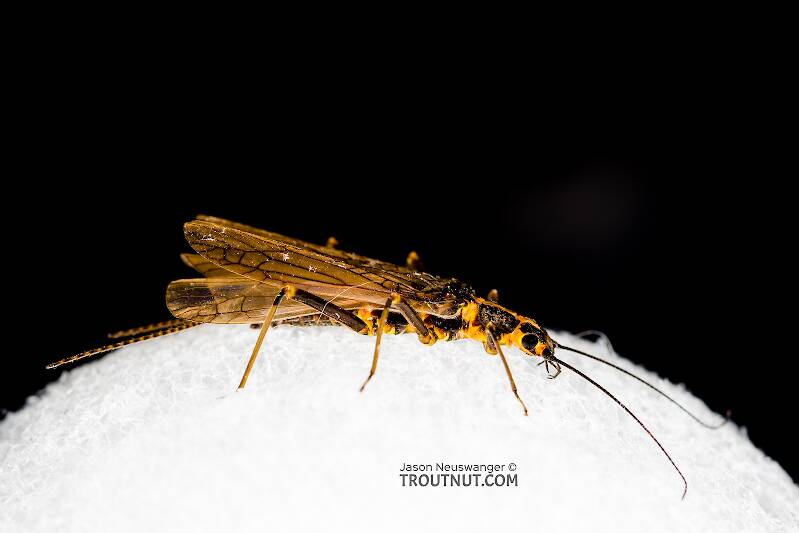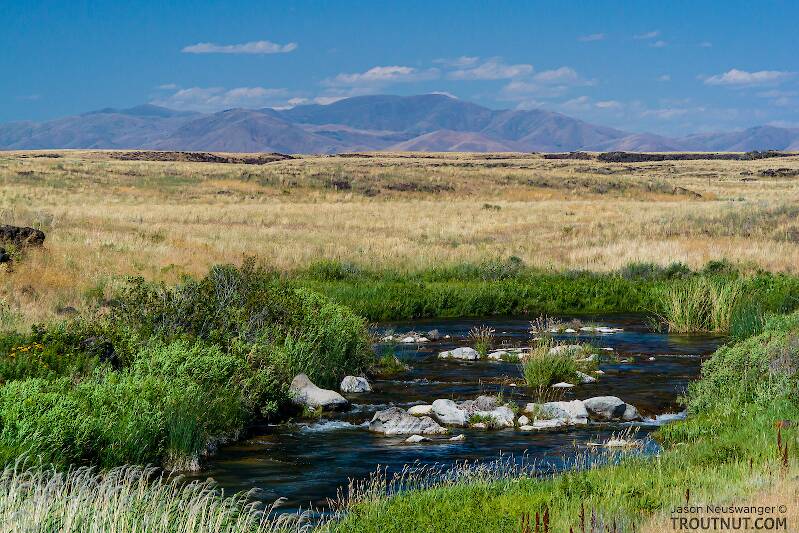
Blue-winged Olives
Baetis
Tiny Baetis mayflies are perhaps the most commonly encountered and imitated by anglers on all American trout streams due to their great abundance, widespread distribution, and trout-friendly emergence habits.

Stonefly Species Pictetiella expansa (Autumn Springflies)
Species Range
Physical description
Most physical descriptions on Troutnut are direct or slightly edited quotes from the original scientific sources describing or updating the species, although there may be errors in copying them to this website. Such descriptions aren't always definitive, because species often turn out to be more variable than the original describers observed. In some cases, only a single specimen was described! However, they are useful starting points.
Description from GBIFthe Global Biodiversity Information Facility
Source: Description Of The Male Terminalia Of Two Western Nearctic Perlodinae (Pictetiella Expansa (Banks) And Salmoperla Sylvanica Baumann & Lauck)
Description: Male. For a habitus description refer to Baumann (1973). Head and pronotum shown in (Fig. 1). Hemitergal lobes (HL) rounded produced inward, apices with long fine hairs, bearing sparse sensilla basiconica anteriorly (Figs. 2, 3). Epiproct cowl densely clothed with short bristle-like setae (Figs. 2, 3) and flanked by inward pointed fingerlike paragenital plates (PP) (Figs. 2, 3). Epiproct sclerotized process bifurcate in lateral aspect (Fig. 2). Sclerotized process singular, widest at base from dorsal aspect (Figs. 3, 4). Fully everted epiproct directed forward. Epiproct long, narrow and widest just before apex (Figs. 3 - 7). Anterior 2/3 of epiproct covered in backward directed shingled scale-like setae, which appear translucent (Fig. 8). Scale-like setae transition into bristle-like setae near apex (Fig. 9). Apex of sclerotized process narrow with flared blunt tip (Figs. 9, 10). Lateral stylets absent. Aedeagus completely membranous, bearing only a few sparse hairs and two small posterolateral lobes (Fig. 11).
Source: Description Of The Male Terminalia Of Two Western Nearctic Perlodinae (Pictetiella Expansa (Banks) And Salmoperla Sylvanica Baumann & Lauck)
Pictetiella expansa: Baumann, (1973: 98.) Pictetiella expansa: Baumann et al., (1977: 22., 115.)
Specimens of the Stonefly Species Pictetiella expansa
1 Female Adult

Start a Discussion of Pictetiella expansa
Stonefly Species Pictetiella expansa (Autumn Springflies)
Species Range
Common Name
Resources
- NatureServe
- Integrated Taxonomic Information System
- Global Biodiversity Information Facility
- Described by Banks, N. (1920) New Neuropteroid Insects. Bulletin of the Museum of Comparative Zoology at Harvard College 64, 299–362, 7 pls.


